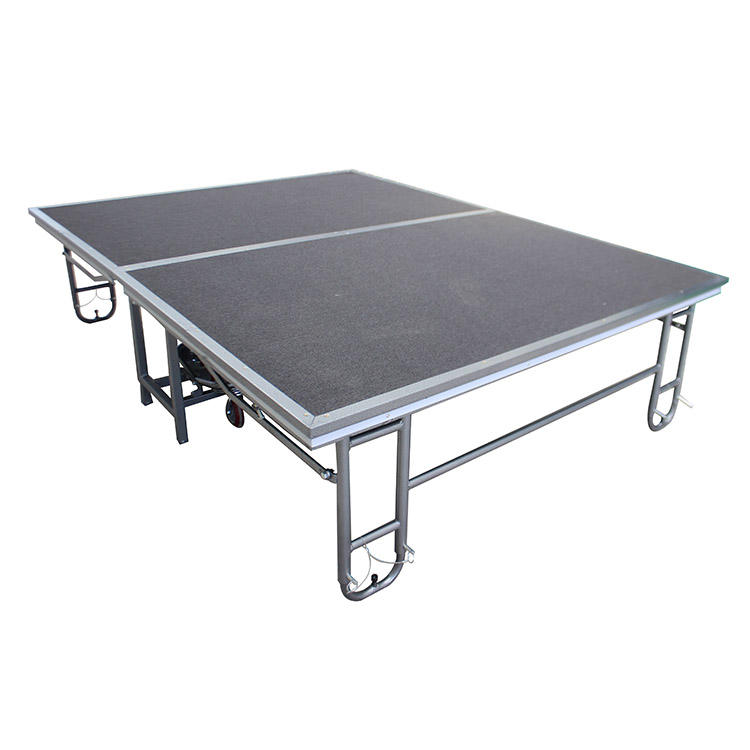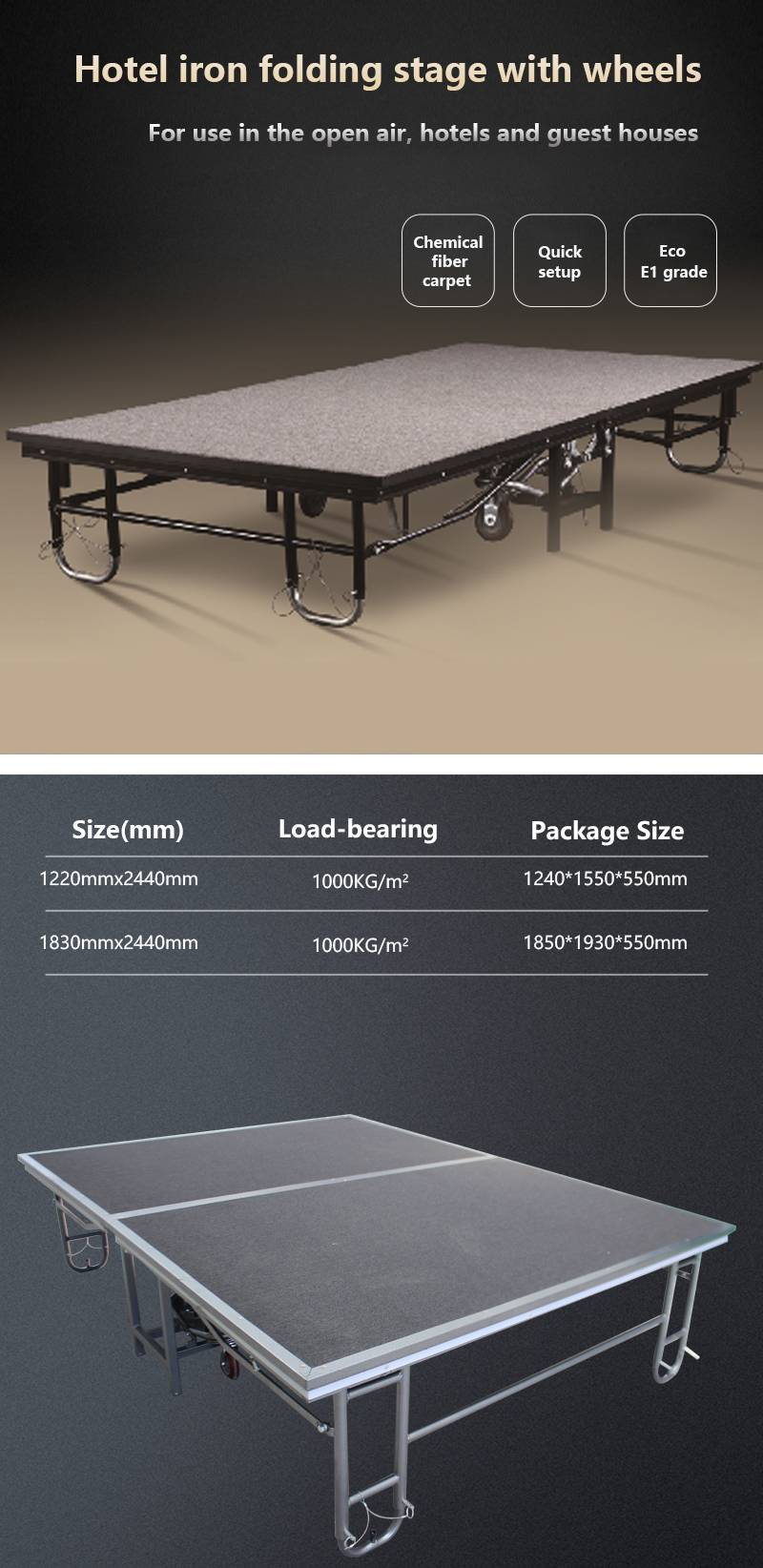What Are You Looking For?
Outdoor iron steel frame metal folding stages offer a compelling blend of practicality, durability, and versatility. They are a robust and adaptable solution for event organizers seeking a reliable, portable, and cost-effective platform. By considering the factors outlined above, event organizers can select the most suitable folding stage to transform their events into engaging and memorable experiences. The folding stage, with its adaptability and practicality, embodies the essence of efficient and dynamic event staging, ensuring a seamless transition from the planning stage to the event itself.
Construction and Features:
Outdoor iron steel frame metal folding stages are engineered for robust performance and long-term durability. Their core structure typically comprises heavy-duty, galvanized steel frames, ensuring stability and resistance to weather elements. The platform itself is often constructed from plywood, aluminum, or composite panels, offering a secure surface for performers and equipment. The folding design, a defining feature of this stage type, enables easy transportation, storage, and assembly, making it a highly practical option for events with varying locations.

Advantages of Folding Stage:
Portability and Assembly: The primary advantage of a folding stage lies in its ease of assembly and transportation. The modular design allows for quick setup and dismantling, making it ideal for events requiring rapid transitions. This portability extends to storage, as the stage can be compactly folded and stored in minimal space.
Durability and Stability: The iron steel frame provides exceptional structural integrity, capable of withstanding heavy loads and diverse weather conditions. Galvanization offers additional protection against rust and corrosion, extending the stage's lifespan. The sturdy construction ensures stability even on uneven terrain, offering a safe platform for performers and audiences alike.
Customization and Adaptability: Folding stages are available in various sizes and configurations, allowing for customization to fit specific event requirements. They can be easily combined and expanded to create multi-level platforms, ramps, or curved structures, enhancing the stage's versatility.
Cost-Effectiveness: While initial investment costs may vary depending on size and features, folding stages generally offer a cost-effective solution compared to permanent stage structures. Their durability and long-term usage justify the initial expenditure, making them an economically sound choice for frequent event organizers.
Applications of Folding Stages:
The versatility of folding stages extends to a wide range of applications, making them suitable for diverse events, from intimate gatherings to large-scale productions.
Performances and Concerts: From musical performances to theatrical productions, folding stages provide a solid and aesthetically pleasing platform for showcasing talent.
Corporate Events and Conferences: These stages serve as an ideal platform for presentations, product launches, and keynote speeches, enhancing the professionalism and visibility of the event.
Festivals and Public Gatherings: Folding stages facilitate the creation of dynamic outdoor venues for music festivals, cultural events, and community gatherings.
Weddings and Celebrations: They offer a charming and elegant backdrop for wedding ceremonies, receptions, and other celebrations, providing a stage for speeches, entertainment, and dancing.
Trade Shows and Exhibitions: Folding stages create dedicated spaces for product demonstrations, presentations, and interactive displays, enhancing visitor engagement at trade shows.
Factors to Consider When Choosing a Folding Stage:
Size and Capacity: Determine the stage's required dimensions based on the event's size, performers, and equipment. Ensure sufficient space for movement and safety.
Load Capacity: Consider the weight of performers, equipment, and audience members to select a stage with adequate load-bearing capacity.
Materials and Finish: Choose materials that meet the specific needs of the event, considering durability, weather resistance, and aesthetic appeal.
Features and Accessories: Assess the need for additional features like handrails, stairs, lighting mounts, and backdrops to enhance functionality and aesthetics.
Budget and Availability: Establish a budget and explore options that align with financial constraints while ensuring quality and durability.
